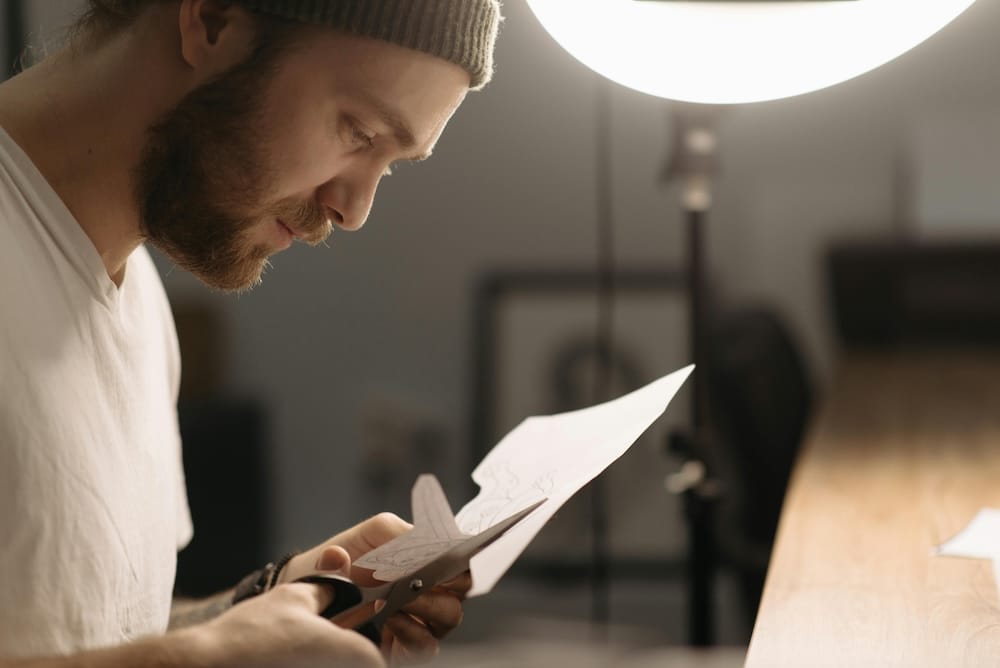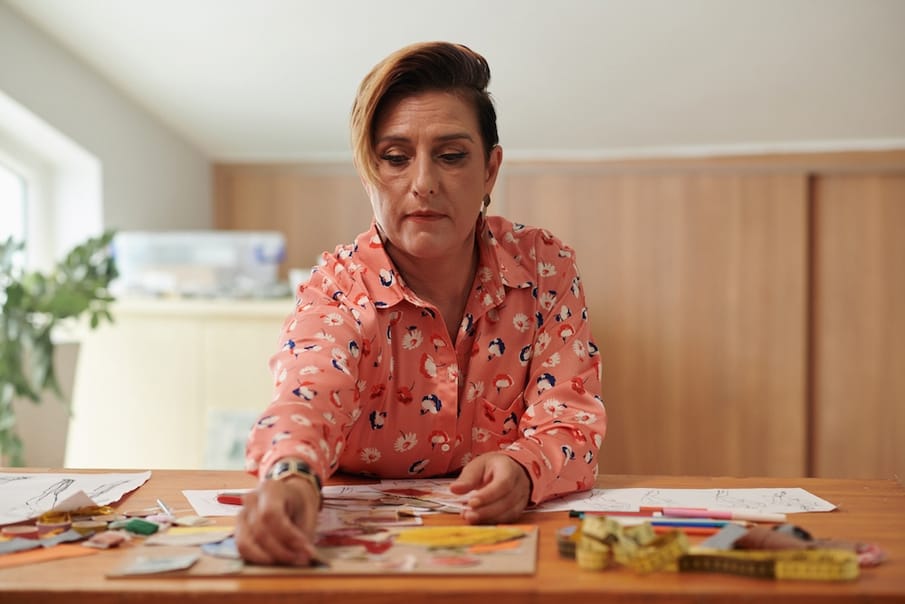Making art doesn’t have to be so serious. Here, we’re exploring ‘found art’ and how putting play back into creativity could benefit us
I sift through the sheets of A4 paper, searching the sentences for interesting words and phrases. I then take my scissors and carefully cut away. Soon, I have a pile of fragments from these documents. I get a blank piece of paper and start arranging the cut-out words to form new sentences, new ideas. I spend some time playing around with it, moving words around, trying different orders. After a while, I’m happy with the poem I’ve created – it’s something new out of something old.
This is a technique sometimes known as ‘found poetry’. In essence, found poetry, and found object art, involve creating new artistic work from existing materials. It could be cutting up old letters into a poem or making a collage out of anything from old receipts and ticket stubs to takeaway menus or magazine cuttings.
It’s a form of creative work I’ve been drawn to for a long time. There’s something satisfying in being able to create something new out of things that already exist, as well as a sense of freedom – there is no right or wrong way to do this. I love the unusual and unexpected connections that can be made when seemingly random words or images are juxtaposed on the page.
Found objects were a key feature of Dadaism and surrealism, two important art movements of the 20th century. I’ve always been drawn to the Dada ‘cut-out technique’, which involves cutting up magazines and newspapers to create absurd or satirical collages. Work like this can ask questions about the nature of art, and how it relates to life.
Found art and wellbeing
“Found art can help guide us through the oppositional nature of life, where the many restrictions and containments placed on us can also lead us to a greater need for freedom and autonomy,” says counsellor Katie Schofield.
“In other words, we can often feel hopeless and oppressed by conditions placed on us that are outside of our control, but within that, breeds the desire for self-agency. By using mediums that already exist to create something new, it can help us acknowledge what is within our control and further encourage choice and self-expression. It can teach us that the self is limitless, and continues to want to be heard and understood – either by ourselves or others – regardless of the limits placed on us.”
The nature of found art, in using and arranging pre-existing materials, is part of the benefit – we can create something new out of anything, and there are no rules about what we can make.
“Whether it is to develop our understanding on a logical level, or an experiential level, found art grants us the inner sense of expansion and freedom that we always needed but never knew existed,” says Katie.
“Found art can support us with our wellbeing by helping us move from feeling stuck to feeling more open and hopeful,” she adds. “The experience can help us reconnect to ourselves and our surroundings, which, in turn, creates a sense of purpose and meaning. Essentially, it can remind us that we matter, regardless of the things happening to us that are outside of our control.”
How to give it a go
Many of us are used to the idea of creativity being something with a set purpose or aim. Part of the joy of found art is about doing our best to let go of a sense of restrictions. It can take some time to allow yourself to feel this freedom, so don’t worry if your first time trying found art feels a little difficult, or you feel a resistance to being creative in this kind of way.
You may want to create a piece of found art around a loose theme. For me and the notes I cut up, for example, I focused on medical notes that felt disconnected from my lived experience. I wanted to take something disempowering and create poetry that reflected how alienating these words felt – almost like I was reclaiming these words. The poem I created had some flow to it, but I didn’t worry too much about the form. Sometimes, the absurdity of found art is part of its appeal.

You could take anything with words on it, or have a hunt for old items that you no longer need. Those ticket stubs from past gigs? That leaflet that’s been sitting on the kitchen counter? Those catalogues, those shopping lists, junk mail, bus tickets, postcards… anything!
Find something like a sheet of paper or card, and get some glue or tape, and scissors. Try moving things around, see what works, what interesting contrasts appear, or what words or images seem to complement each other.
If you feel daunted by this process, another option is to let things fall onto the page and to keep them in place wherever they land. Or, do like the Dadaists, and take words at random to create new lines. Do what works for you, letting yourself enjoy the process and trying not to worry about ideas of what art ‘should’ look like.
For me, found art is a way of kindling my creativity that lets go of ideas of perfectionism, that gives me the freedom to be messy and have fun. So have a go – you may be surprised at what you create, and the joy you get from playing with art.


Comments